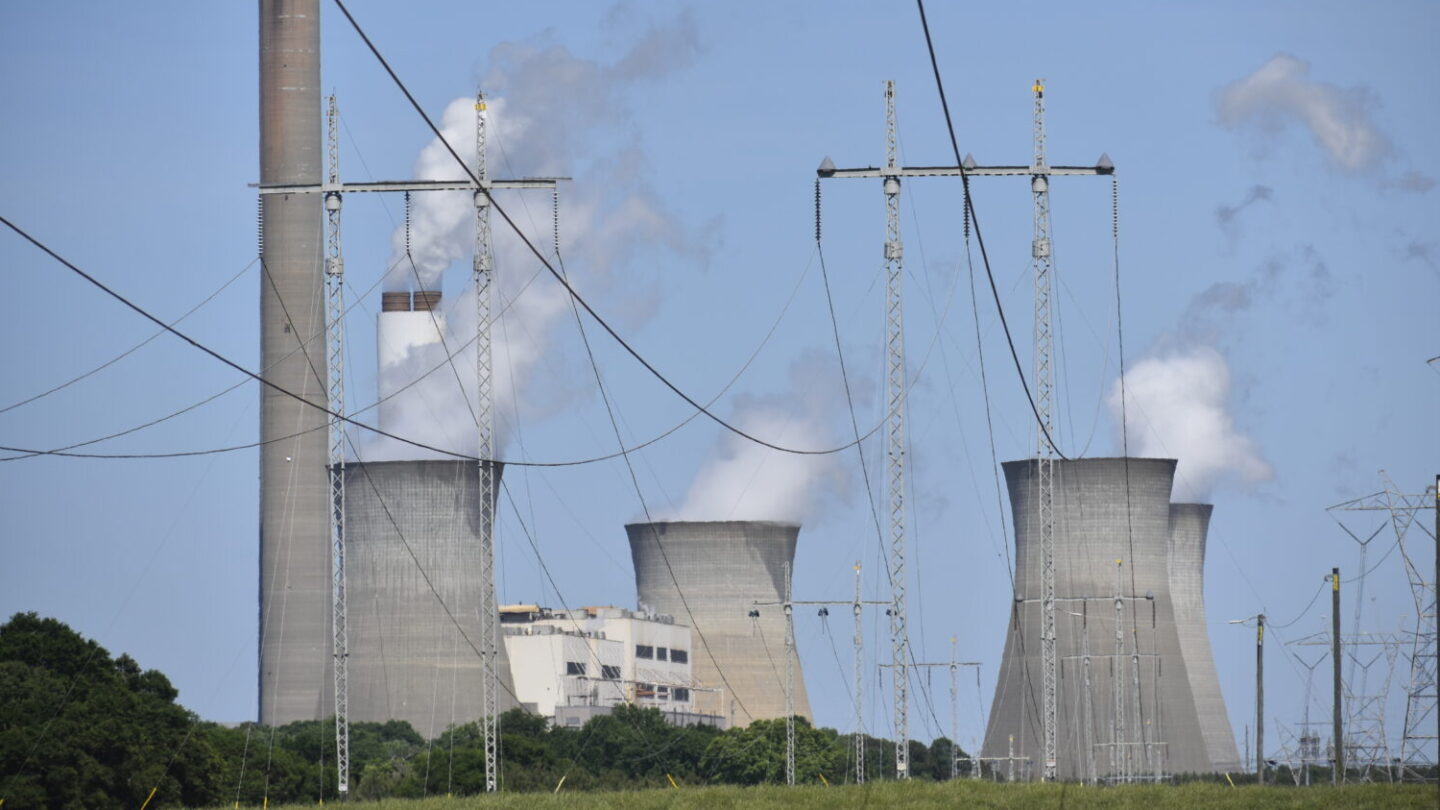Georgia’s air polluted with fewer emissions as coal-fired electricity production winds down

A new report released this week offers a rare bit of positive climate news: Overall greenhouse emissions in Georgia declined 5% from 2017 to 2021, due largely to the state’s largest electric utility moving away from coal.
And when it comes to per-person emissions, those declined by 8% during that four-year period.
The report, issued by Drawdown Georgia, which is a statewide research-based initiative, comes amid warnings that aggressive action is needed to avoid the worst effects of climate change.
And while the report found short-term gains in Georgia, Marilyn A. Brown, a professor of sustainable systems at Georgia Tech and a member of Drawdown Georgia’s research team, said “bolder steps” are needed to reach long-term climate goals.
Brown emphasized that progress was made in Georgia even as both the state’s population and economy have grown.
“Now I’ve been at this a long time, and I remember way back it seems every time I’ve talked to anyone of political influence, they would say, ‘You keep talking about pollution reduction, but you know, we’ve got to grow our economy, and you can’t have both.’ So, yes, you can. You can have both, and we’ve shown it,” Brown said Wednesday at the Georgia Climate Conference in Athens.
The analysis looked at net emissions in the state, factoring in the offsetting influence of Georgia’s forestland and soil.
As the utility winds down its reliance on coal, it is also ramping up nuclear-power generation. The controversial expansion of Plant Vogtle near Augusta is billions of dollars over budget and years behind schedule, but when it comes online, it will produce “essentially zero-carbon” energy for the grid, Brown said.
Georgia Power plans to have the new units at Plant Vogtle completed by early 2024. But the utility has also been criticized for its increased reliance on a cleaner fossil fuel source, natural gas.
“That’s why this trend is going to continue to improve at probably comparable pace, because we have the nuclear plant coming online,” Brown said in an interview.
Increases in utility scale solar, natural gas consumption and the efficiency of electric appliances have also contributed. But Brown argued more could be done in the electricity sector to cut emissions. As an organization, Drawdown Georgia is pushing for greater reliance on renewables like solar and shifting electricity usage to off-peak times.
It’s a mixed bag, though, when it comes to looking at the goals laid out in the Paris Climate Agreement, which calls for cutting emissions in half by 2030 and reaching carbon neutrality by 2050.
“The good news is going to continue, but it’s not going to continue out to 2050 unless we do something completely different. The challenge is the long term. But we’ve got 2030 in hand,” Brown said.
Georgia also saw a decline in emissions from its top industry. Food and agriculture emissions decreased by 7.1% during the four-year period analyzed.
But transportation emissions were a different story. Brown said the decarbonization of electricity in Georgia has made transportation the state’s largest source of carbon emissions.
COVID-19 cleared the roadways as people hunkered down at home, but the pandemic also brought a jump in online shopping. Overall transportation emissions had already surpassed pre-pandemic levels in 2021.
Gov. Brian Kemp is pushing to make Georgia the electric mobility capital of America. In recent years, the state has landed major clean energy projects that are positioning Georgia as the center of solar panel and electric vehicle manufacturing.
Two major EV plants are in the works, and just this week, the governor announced a supplier of materials for lithium-ion batteries plans to spend $800 million to build a new plant in rural Decatur County, bringing 400 jobs to the area. But Georgians have been slow to make the switch to EVs.
“We still have a long way to go to avoid the worst impacts of climate change. I hope this serves as inspiration to double down and do more to encourage electric vehicles, solar and energy efficiency,” said Jennette Gayer, state director of Environment Georgia.
Launched in 2020, Drawdown Georgia has created an online tool that tracks greenhouse gas emissions down to the county level. The data is missing some sources, such as emissions from planes.
“The Drawdown Georgia Research Team reports that the Georgia story is beginning to trend to a positive one, and that the carbon footprint of our ‘average’ citizen has declined from 22,092 to 20,253 pounds,” said John Lanier, executive director of the Ray C. Anderson Foundation, a primary funder of Drawdown Georgia. “Based on the collaborations we’re a part of, we’re confident this is only the beginning of Georgia’s carbon reduction trend.”
This story was provided by WABE content partner Georgia Recorder.








